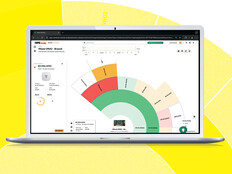Wave 2 of 802.11ac Is Beginning to Make Headway
When it comes to wireless technology, faster is always better. To that end, the latest wireless standard, 802.11ac, is set to make 802.11n look like the fabled tortoise to its hare.
In an article for BizTech, William Van Winkle writes that “802.11ac averages about 250 megabits per second while moving TCP traffic across a large suburban home. Under the same conditions, using the same dual-band routers, 2.4-gigahertz 802.11n averages only about 91Mbps.”
That means 802.11ac provides speeds that are up to 2 and a half times faster than 802.11n, the version of the IEEE wireless standard that precedes it.
Early adopters have been able to get their hands on Wave 1 802.11ac networking products since earlier this year, but ASUS is already jumping ahead to Wave 2 of the protocol, reports GigaOm.
The company revealed its RT-AC87U wireless router at CES to much fanfare, as it’s said to be “the first commercially available router to support Wave 2 of 802.11ac.”
In the past, some have said that 802.11ac routers aren’t much faster than 802.11n, but Wave 2 will make the difference between the two standards much more stark, thanks in large part to one thing: multi-user multiple input, multiple output (multi-user MIMO).
Why Wave 2 802.11ac Could Be a Game Changer
One of the most significant updates to 802.11ac in Wave 2 is multi-user MIMO. To illustrate the significance of this new feature, Kevin Fitchard from GigaOm used this highway analogy to drive the point home:
An 802.11ac network is a four-lane highway, but Wave 1 networks can only let a single car onto that highway at any given moment. A Wave 2 network could let three or four cars onto that highway simultaneously, making much more efficient use of the capacity at its disposal.
In a world where the average user carries multiple devices, and even uses multiple devices at the same time, the ability to target more than one computer with the same signal will be a huge boost in wireless efficiency.
In addition to multi-user MIMO, Wave 2 will include an additional spatial stream, wider channels and improvements in power consumption and signal processing.
Although there appear to be major upsides to having multi-user MIMO as a feature, things could change once more Wave 2 products hit the shelves.
Last year, in response to a forum post about the benefits of Wave 2, Matthew Gast, director of product management at Aerohive Networks, said, “Of those components, MU-MIMO is definitely the wildcard. We know what we'll get out of 160 MHz channels (another 2x in max speed) and a fourth spatial stream (1.33x in max speed). Much of the range in quoted wave 2 performance is due to differing predictions on how much speed MU-MIMO will add.”








